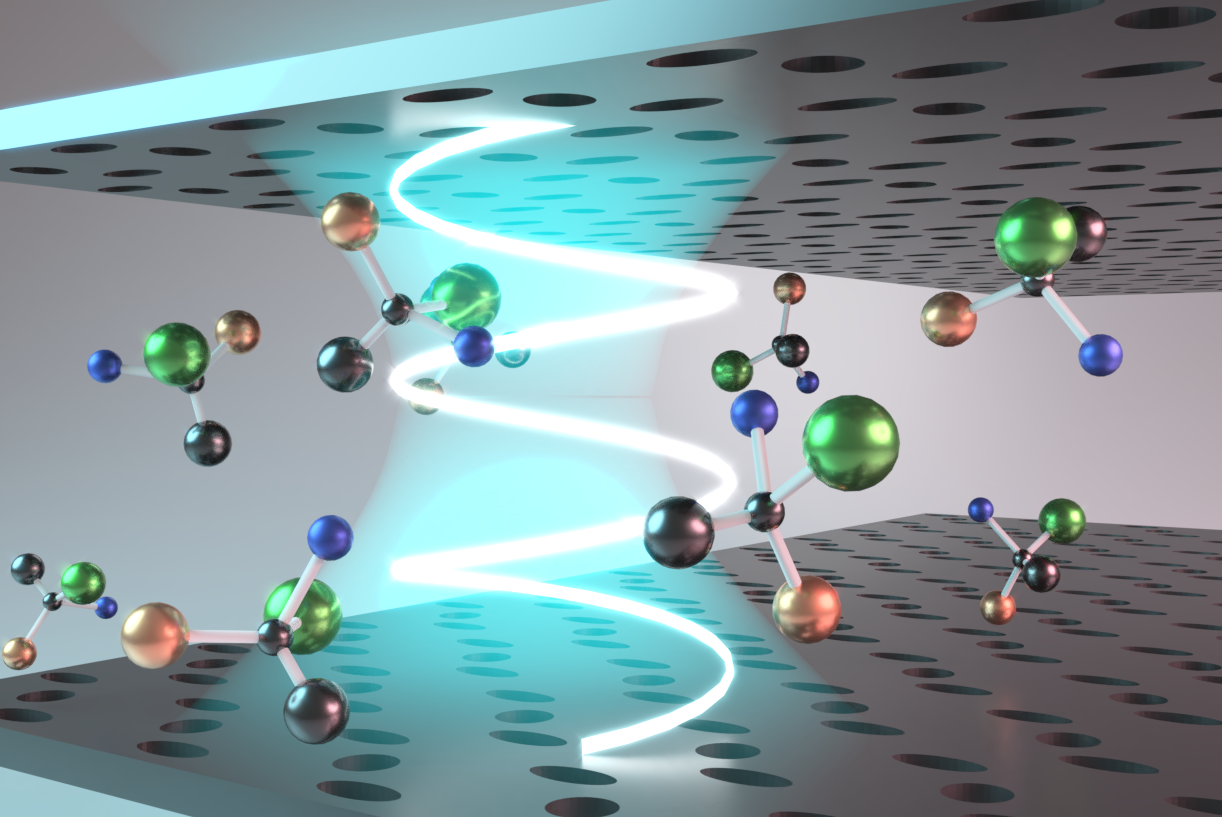Chiral QED Chemistry
Using chiral electromagnetic environments to reach high enantiomer selectivity for sensing and catalysis
Many molecules and biological structures feature a reflection symmetry without possibility to overlay the reflections via rotations and translations. Those sibling structures are known as enantiomers. Our DNA or helicene molecules are of spiral shape and their absorption strength depends on the relation between the handedness of the spiral and the handedness of the incoming light. Being able to identify the relative content of a specific enantiomer in a mixture, or modifying specifically one enantiomer, are critical for pharmaceutics and chemical synthesis. By designing resonator structures that confine chiral light, we can unlock a new perk in the QED Chemistry tool-box – enantiomer selectivity.
Starting point for the interested reader: (Schäfer & Baranov, 2023) (Baranov et al., 2023)
